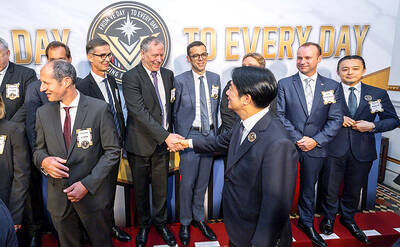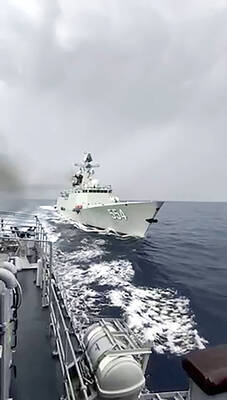The idea was never to try to supplant retail, says Fan Bi, the 22-year-old chief executive of Blank Label. Sometimes you need a dress shirt right now, and at those times, Bi says approvingly, “you can get it right now at Nordstrom.”
But what about those times when you get a hankering not to wear the same thing that 10,000 other men are wearing? Or when you wish you could have the fabric, collar, pockets and lining you’ve always wanted — not what some fashion buyer has chosen for this season? What if you could design that shirt yourself and hang it in your closet for about the same price as a mass-produced button-down?
“The value proposition of customization at retail prices was a cornerstone of our company from the very start,” Bi tells me by phone from Shanghai, where Blank Label shirts are sewn to customers’ specifications and delivered anywhere in the world in about four weeks.
But Blank Label, his Web start-up based in Boston, offers something else that off-the-rack doesn’t.
“The emotional value proposition: How expressive something is,” he says. “People really like a Blank Label shirt because they can say, ‘I had a part in creating this.’”
Since last Halloween, when the company’s dress shirt design application made its debut at www.blank-label.com, Bi and his three partners — ages 19, 22 and 30 — have joined a small but growing co-creation movement that uses the Internet to let consumers have a hand in making the products they buy.
Web ventures have already popped up that allow shoppers to customize granola (MeAndGoji.com), jewelry (gemvara.com), chocolate (CreateMyChocolate.com), handbags (LaudiVidni.com) and clothing for girls ages 6 to 12 (FashionPlaytes.com). There are also online competitors selling design-your-own shirts, while Brooks Brothers is one major retailer that offers the service on its Web site.
The upside for business owners is obvious: low overhead. At Blank Label, for example, the sew-as-you-go business model eliminates the need to produce shirts of every size and style. There’s no need to rent space to store inventory. There’s no storefront, no office other than a borrowed space at Babson College in Boston, where until recently Bi was an exchange student from the University of New South Wales — he grew up in Australia.
“We’ve focused on being very bootstrap, very lean,” says Bi, who says the business has sold about 450 shirts.
Recently, it has seen a big bump in traffic, with orders of about 10 shirts a day. He says the company makes money on every shirt.
Once, Bi wanted to be an investment banker. In the summer of 2008, while pursuing his finance degree, he worked as a junior analyst at a Sydney bank. However, the experience left him disenchanted.
“Probably a product of my generation — I was too entitled,” he says. “I felt I’m just one very, very small ant in this massive firm. I’m not feeling very engaged. And entrepreneurships and start-ups became interesting.”
On a trip to Shanghai, where his parents grew up, he got an idea: A service offering custom-tailored suits to college students at a bargain price. He wasn’t thinking about an online business. He thought he’d hire a rep at every college in the Boston area and sell suits one at a time.
Then he met Danny Wong, now a 19-year-old communications major at Bentley University. Wong had applied to be a rep. Excited about “bridging the gap between consumer and manufacturer,” Wong remembers quizzing Bi about his marketing strategies, particularly on the Web. They teamed up and, several months later, Blank Label was born.
At first, Bi and Wong tried to raise venture capital.
“To be honest, we couldn’t,” Bi says. “We were two very young guys who had no track record.”
So Bi financed the site with about US$10,000 in savings, he says, recruiting a programmer and a Web designer and vowing to make leanness a strength, not a weakness.
One goal was to communicate directly with customers. The Web site commands: “Call us. We like to talk.” Depending on the time of day, Bi answers the calls himself. When he is awake, he also activates a feature that sends instant messages to customers who have been on the site for more than 90 seconds.
“Need help?” he asks.
For several hours a day, he and his partners chat with customers about what they like and don’t like on the site.
The feedback has led to several site revamps and — I can’t resist — alterations. The company is on its third home page in six months, and the partners say they tweak the site every day.
A few weeks ago, before I had decided to write about Blank Label, I sat down and designed a shirt for my 13-year-old son. It was a striped button-down made of “Green With Excitement” — all Blank Label’s fabrics have hyperdescriptive names. I chose the cut, the size, the placket and the collar; I opted for single-button cuffs, no pockets and no epaulets.
For fun, and to test the ordering interface, I added a contrasting inner collar and cuff in a solid fabric called “Masculine Poplin Grey,” and added a monogram of my son’s initials on the cuff. For the inside of the collar, I made up a custom label, “Live Free or Die.”
The whole process took 10 minutes. With all the bells and whistles, the shirt cost US$72, compared with US$45 for Blank Label’s most basic, no-frills model.
The site showed me a mock-up, which looked great. But when I went to check out, the order summary did not list the contrasting inner collar. No matter what I did, the inner collar was green and excited instead of masculine and gray. So I clicked on “Help” and sent a message. Soon, I heard back — from Bi himself. Notably, this was before he knew he would be in my next column.
My shirt is in the mail. It is, Bi assures me, just as I designed it. If my son doesn’t love it, Blank Label policy is that I can return it, no questions asked. But I already know what I’m going to like best about it: I sort of made it myself.

DEFENDING DEMOCRACY: Taiwan shares the same values as those that fought in WWII, and nations must unite to halt the expansion of a new authoritarian bloc, Lai said The government yesterday held a commemoration ceremony for Victory in Europe (V-E) Day, joining the rest of the world for the first time to mark the anniversary of the end of World War II in Europe. Taiwan honoring V-E Day signifies “our growing connections with the international community,” President William Lai (賴清德) said at a reception in Taipei on the 80th anniversary of V-E Day. One of the major lessons of World War II is that “authoritarianism and aggression lead only to slaughter, tragedy and greater inequality,” Lai said. Even more importantly, the war also taught people that “those who cherish peace cannot

Taiwanese Olympic badminton men’s doubles gold medalist Wang Chi-lin (王齊麟) and his new partner, Chiu Hsiang-chieh (邱相榤), clinched the men’s doubles title at the Yonex Taipei Open yesterday, becoming the second Taiwanese team to win a title in the tournament. Ranked 19th in the world, the Taiwanese duo defeated Kang Min-hyuk and Ki Dong-ju of South Korea 21-18, 21-15 in a pulsating 43-minute final to clinch their first doubles title after teaming up last year. Wang, the men’s doubles gold medalist at the 2020 and 2024 Olympics, partnered with Chiu in August last year after the retirement of his teammate Lee Yang

The Philippines yesterday criticized a “high-risk” maneuver by a Chinese vessel near the disputed Scarborough Shoal (Huangyan Island, 黃岩島) in a rare incident involving warships from the two navies. The Scarborough Shoal — a triangular chain of reefs and rocks in the contested South China Sea — has been a flash point between the countries since China seized it from the Philippines in 2012. Taiwan also claims the shoal. Monday’s encounter took place approximately 11.8 nautical miles (22km) southeast” of the Scarborough Shoal, the Philippine military said, during ongoing US-Philippine military exercises that Beijing has criticized as destabilizing. “The Chinese frigate BN 554 was

The number of births in Taiwan fell to an all-time monthly low last month, while the population declined for the 16th consecutive month, Ministry of the Interior data released on Friday showed. The number of newborns totaled 8,684, which is 704 births fewer than in March and the lowest monthly figure on record, the ministry said. That is equivalent to roughly one baby born every five minutes and an annual crude birthrate of 4.52 per 1,000 people, the ministry added. Meanwhile, 17,205 deaths were recorded, resulting in a natural population decrease of 8,521, the data showed. More people are also leaving Taiwan, with net